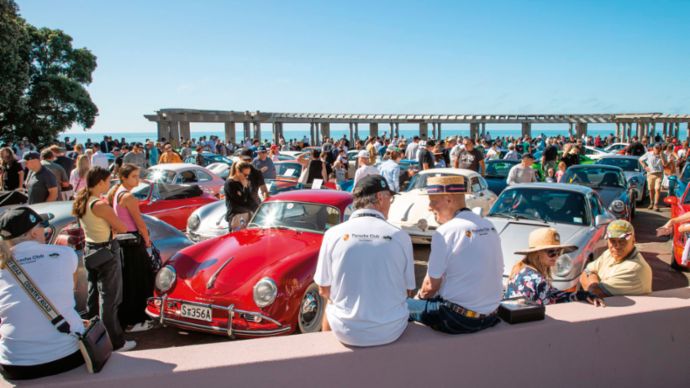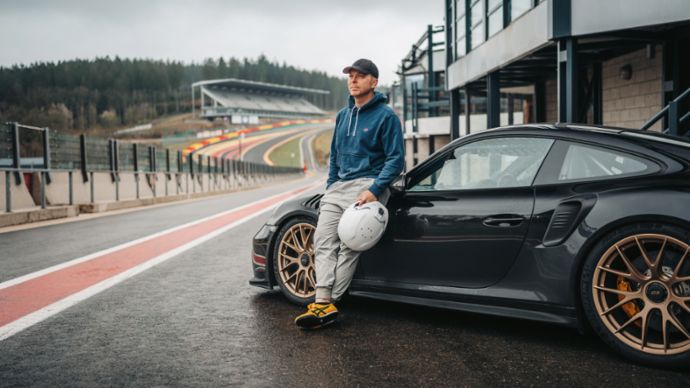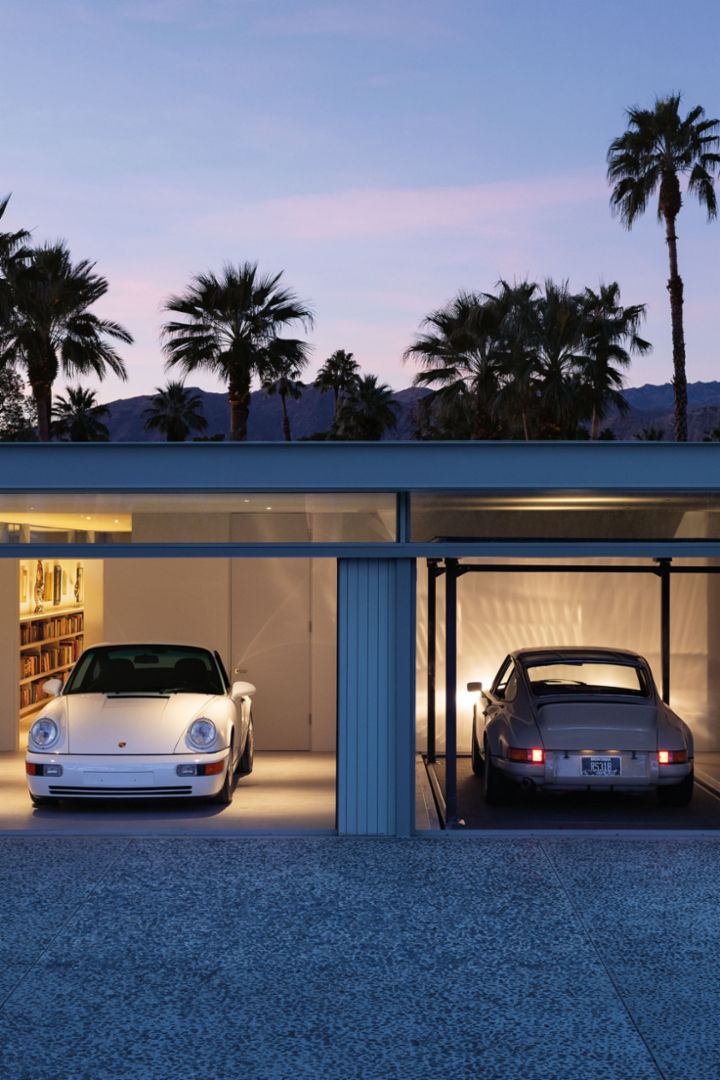The Future of Tokyo Driving
Ted Gushue is a pioneer of the digital age and Porsche enthusiast – with an affinity for Japan. For Christophorus, he travels to Tokyo as an author and meets his friend Norihiro Tacamizuma, with whom he shares a passion for sports cars. On a night drive in the 911 GT3 RS (997) and the Macan Turbo, he discovers the city with new eyes. An essay.
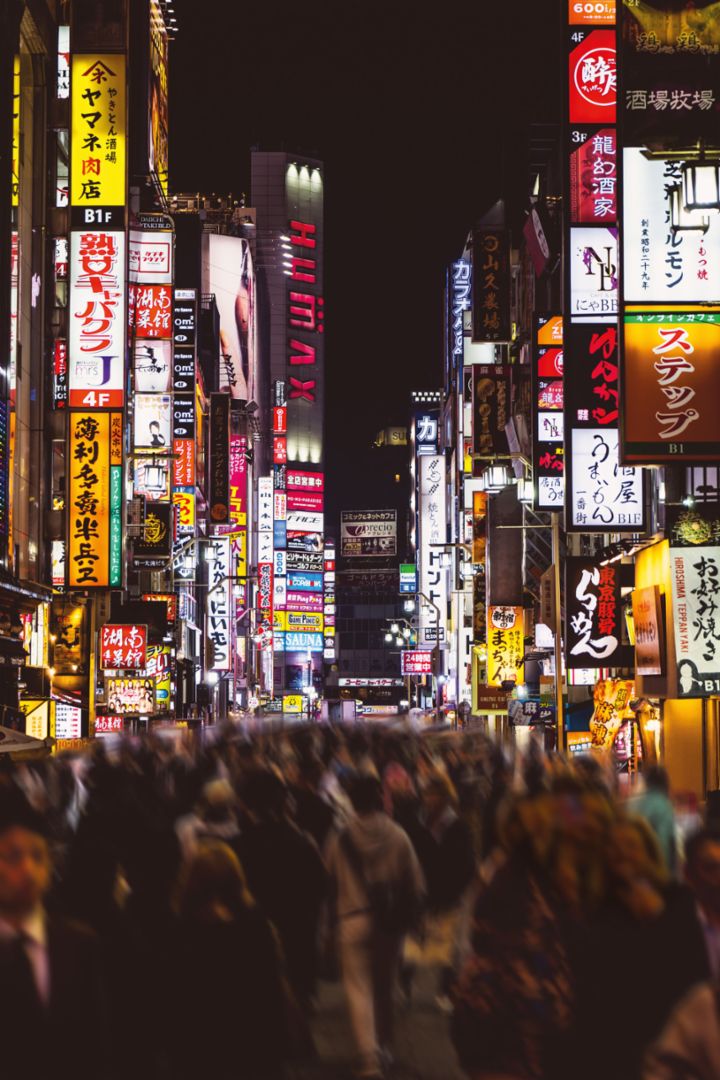
I recently found myself describing my relationship with Japan to a colleague during a work call. She asked why I’ve made such an effort to work in the country. It wasn’t as if the opportunity simply presented itself; quite the opposite, in fact. Over the past six years, I’ve spent more than seven months of my life working there, a tiny fraction for some, but for me, it represents some of the most valuable time I’ve enjoyed in my adult life.
I told her that Japan, and by extension Tokyo, is where I feel most spiritually at home. Soon after saying so, I realized it was true. Imagine a city, a country, and a people who treat every object as if it has a soul, who care for, maintain, polish, restore, and fuss over vintage cars not as a hobby, but as a cultural way of being. A city where you can leave your Carrera GT unlocked on the street for weeks without worrying about theft or vandalism. I could go on and on about Japan and for that matter Tokyo – and I think I might actually.
Tokyo, like New York or Paris – or any great city, really – is small.
Not small in population. With over 14 million people in the city proper, it’s the most populous urban area in the world. And not in scale either – draw a wide enough circle around Tokyo’s prefectures and it nearly rivals the New York tri-state area in landmass.
No, Tokyo is small in the way it contracts at night. After midnight, the city folds in on itself. The pace changes. The rhythm softens.

At home in the night:
Norihiro Tacamizuma has owned nightclubs and bars in Tokyo for around 30 years.Norihiro Tacamizuma is one of those people – and has been for many years. Originally from Fukuoka Prefecture, Tacamizuma – Taca, for short – owes much of his professional life to the hours between sunset and sunrise. He moved to Tokyo’s sprawling urban chaos over 30 years ago and quickly found his footing in the city’s underground nightlife scene of the early 1990s. Tokyo at that time was on fire. Though the government legally forbade dancing, a seemingly endless stream of nightclubs sprang up across the city as Sofia Coppola’s film crew immortalized the city in her film Lost in Translation. Taca built his reputation during this period as a prolific nightclub owner, specializing in the burgeoning house music scene. His signature understated style created an aura of “if you know, you know,” a quiet confidence he carried into his next chapter: small-batch, artisanal sake.
When Taca asked his friend, celebrated fashion designer Alexander Wang, to design a speakeasy sake bar dedicated to organic craft sake that requires at least twelve months to produce in Tokyo’s Nishiazabu in 2016, he had a specific concept in mind: something between a futuristic speakeasy and a subterranean after-hours hideaway. The bar, which goes by the name twelv., is now one of the most exclusive locations in the city.
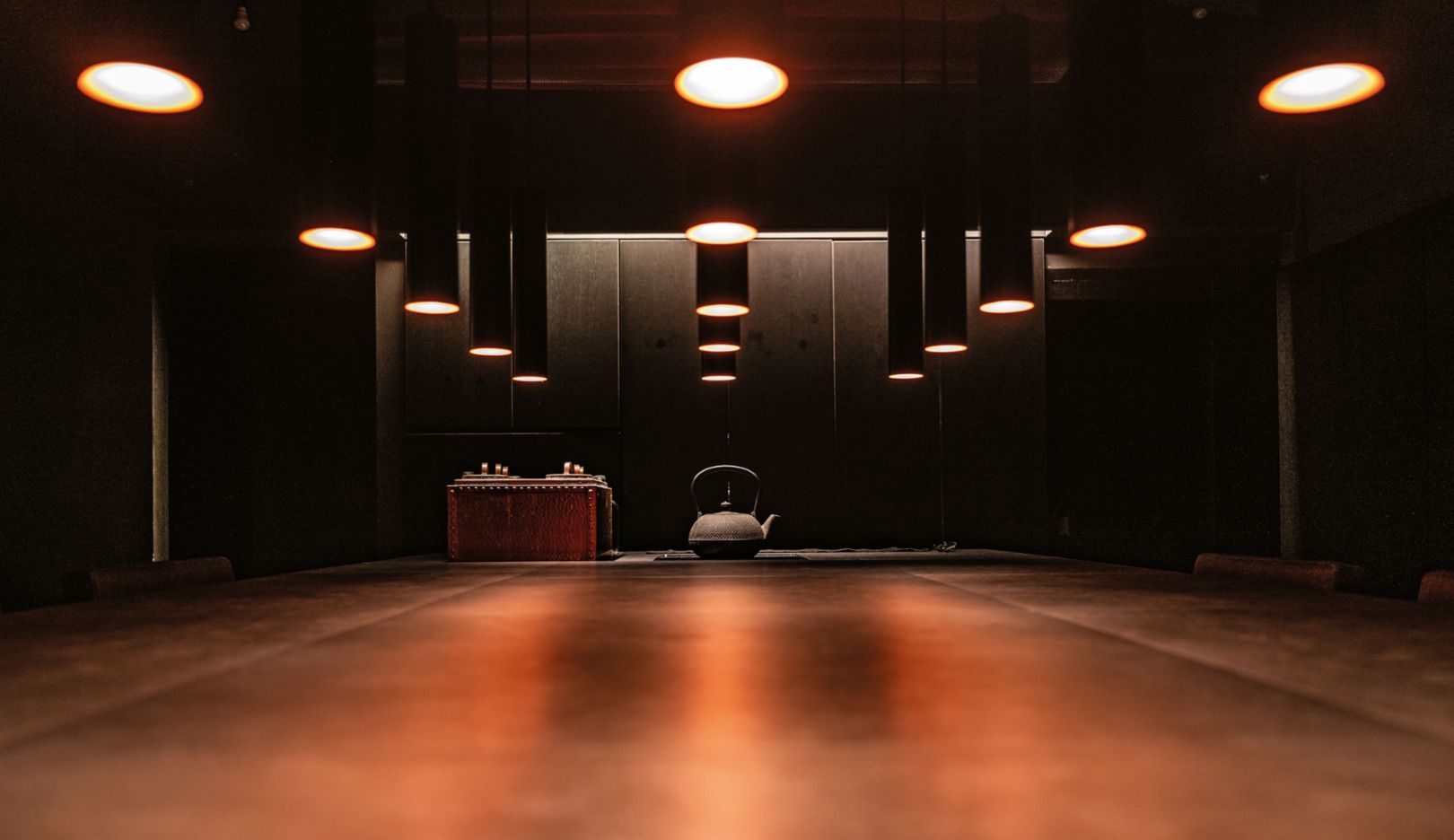
Minimalist:
The design concept of Taca’s bar needed to reflect his outlook on life.The twelv. philosophy is a reflection of Taca’s outlook on life: minimal, meticulous, and quietly expressive. The bar enforces a strict “friends and reservation only” policy – no walk-ins. Introductions must be made directly to Taca or his right hand, Olivia Pan. The entrance is tucked down an auxiliary staircase, behind an unmarked vaulted door in a nondescript office and retail building near one of Nishiazabu’s busiest intersections. First-time guests often find it impossible to locate, even with GPS. But there’s one subtle giveaway that signals Taca is open for business: a Porsche 911 parked in the one reserved spot out front.
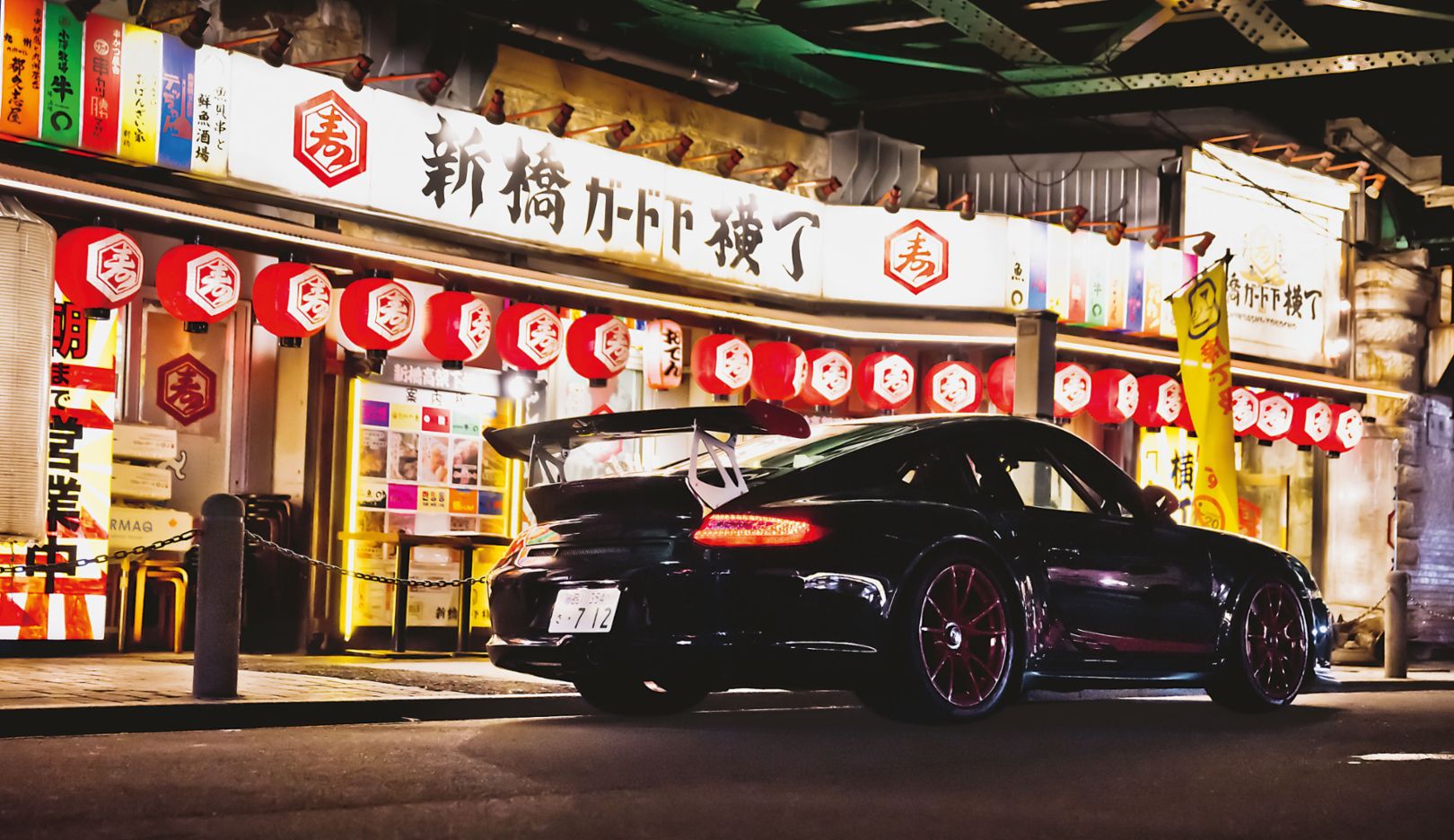
Harmonious contrasts:
The design of Taca’s 911 GT3 RS (997) perfectly complements Tokyo’s nocturnal landscape.“I’ve been obsessed with Porsche since I was a kid – ever since I had a toy model of the 930,” Taca explains as we climb into his 911 GT3 RS (997), which is parked out in front of his bar, just behind the all-electric Macan Turbo we’ve been loaned by Porsche Japan. The GT3 RS is just one of many Zuffenhausen sports cars he’s owned over the years. “In Tokyo, you need to register your parking space before you can register a car, so I’m limited to four Porsche at a time,” explains Taca.
In the five years I’ve known Taca, I’ve experienced a virtual catalogue of Porsche’s history through his collection: 930, 928, 993, 997, 991 – you name it, and at some point, he’s owned a pristine example. Lately, I’ve watched him dip his toes into more electrified waters, picking up a Taycan Turbo S to complement his air-and-water-cooled lineup.
The cars are almost all used daily around Tokyo and on the weekends are driven directly to Tsukuba and Fuji racing circuits where the twelv. Racing Team stretches its legs in Gran Turismo style club races. twelv. Racing Team is the perfect expression of Taca’s weekend warrior attitude towards racing, with the “team” expanding to his international group of friends when they come to town. The track days aren’t limited to GT cars however, you’ll often find Taca and his friends entering into endurance carting championships with codrivers like Mai Ikuzawa and automotive film director Luke Huxham.
This is the secret special sauce of Taca’s twelv. Bar and Racing Team; at one point or another his international group of friends and automotive enthusiasts will pass through Japan, keeping his ever rotating cast of copilots fresh and exciting.
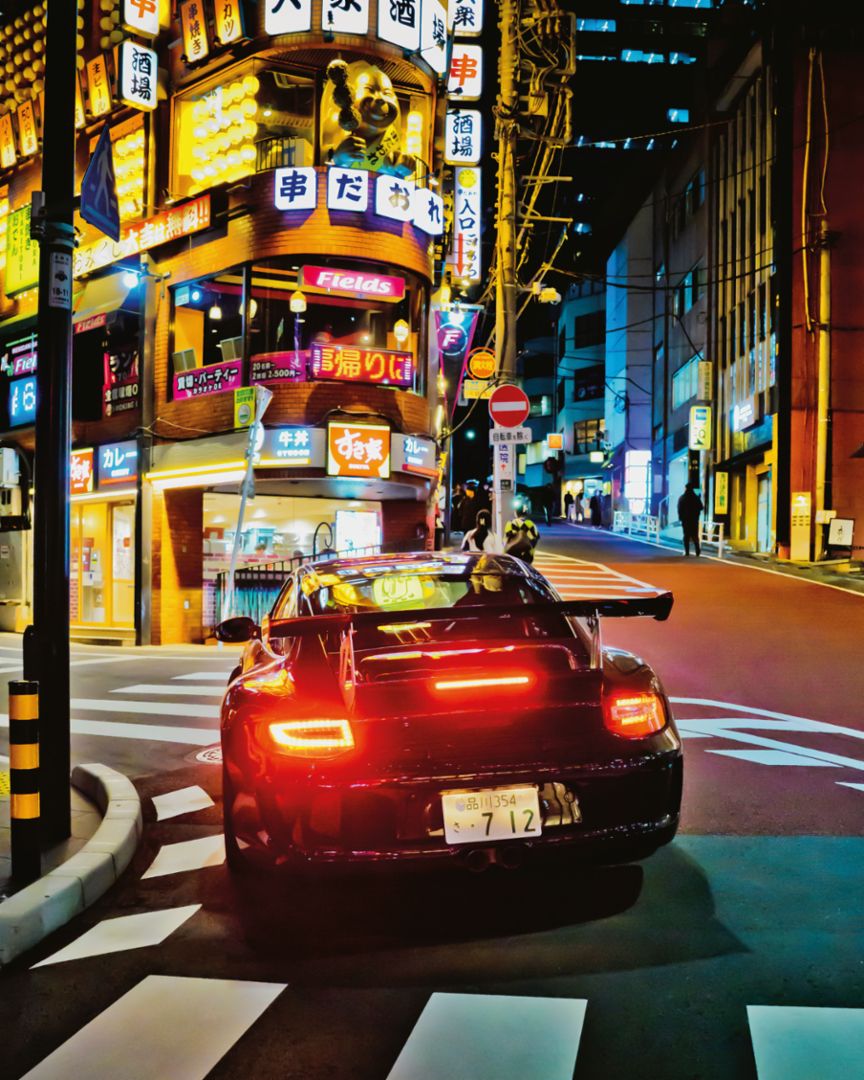
A night drive through downtown:
Taca-san can always find his way, even in the relatively narrow streets of Shibuya.
Tour guide:
When he has friends visiting, you will often find Taca behind the wheel.I remember my first trip to Japan in 2019, shortly before Taca and I met. My airport transfer car was considered the most luxurious ever produced in the country – polished, spotless, and upholstered in velvet. As we coasted down the highway in its suspiciously silent V12-powered frame, I made a passing comment to the driver about the absence of leather, the Western shorthand for luxury. “In Japan,” he said with a knowing smile, “the ultimate luxury is silence. Leather is simply too loud.”
That phrase lodged itself in my mind and quietly recalibrated my notion of Japanese elegance. A short time later, Porsche unveiled the Taycan, entering the Japanese market soon thereafter. Initially met with skepticism, Japan’s cautious embrace of electric vehicles reflected its deep-rooted obsession with hybrid technology.
But six years on, the infrastructure has arrived here, too. Today, there isn’t a new high-rise in Tokyo without integrated fast-charging bays – a critical factor for enthusiasts like Taca, long habituated to the convenience of combustion engines.
As we finish our loop in the GT3 RS, Taca steers back toward Nishiazabu, where I’ve left the Macan parked outside the bar. Curiosity gets the better of Taca, and he asks if he can take the Macan for a spin. Switching from the 911 GT3 RS to the Macan is a transition from one extreme to another – maximum performance in their respective fields. Two vehicles that, despite all of their differences, complement each other perfectly.

Electrifying:
Surrounded by darkness and colorful neon lights, the Macan Turbo blends in seamlessly with the scenery.Tokyo doesn’t reveal itself in a rush. It unfolds. It’s a city of rhythm, not spectacle. It whispers instead of shouts. Its beauty is tucked into corners, woven into rituals, revealed only to those who move slowly enough to notice. Driving the Macan through Tokyo and especially the brightly illuminated downtown area at night, you enter a kind of quiet dialogue – not just with the city, but with yourself.
The Macan feels designed for this place: quiet, responsive, composed. Its silence doesn’t create emptiness; it creates space – a stage on which the city can perform. Where combustion demands attention, electricity lets the surroundings breathe. In Tokyo, silence isn’t absence. It’s presence.
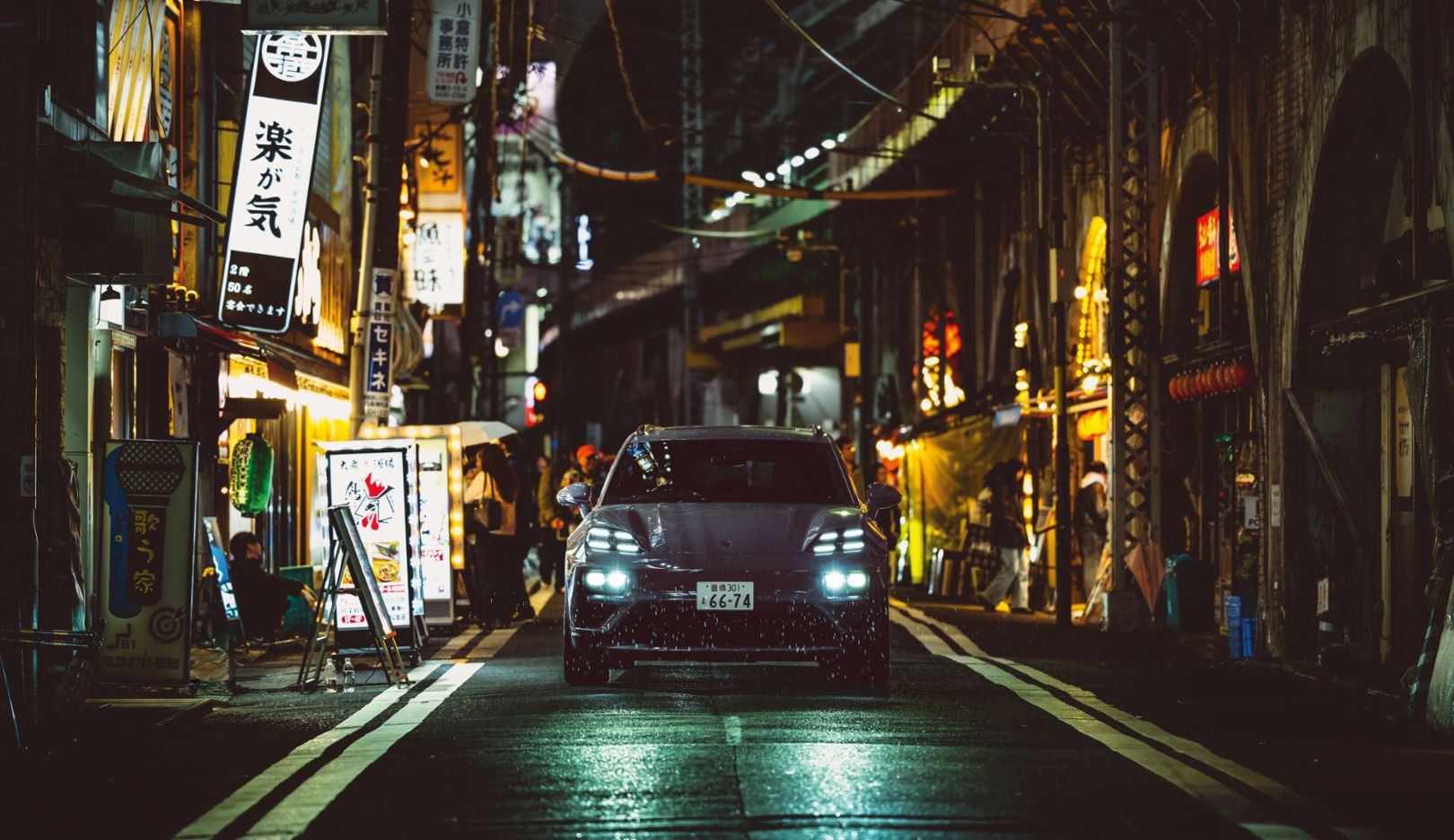
Elegance:
The understatement of the all-electric Macan stands out in a city in which harmony takes precedence.Driving here is never passive, in any car – but Taca appreciates the unique feeling of the electric platform. “It’s like a fighter jet flying underwater,” he says. “Extremely smooth, yet packing an incredible punch.”
There’s a moment of stillness before he gently accelerates again. The Macan glides forward, eerily smooth, as the city’s sounds filter in with a new clarity. Taca steers through the narrow streets and around the famous Shibuya intersection with a deliberate, practiced touch. The electric drivetrain’s precision seems to echo his own sense of control.
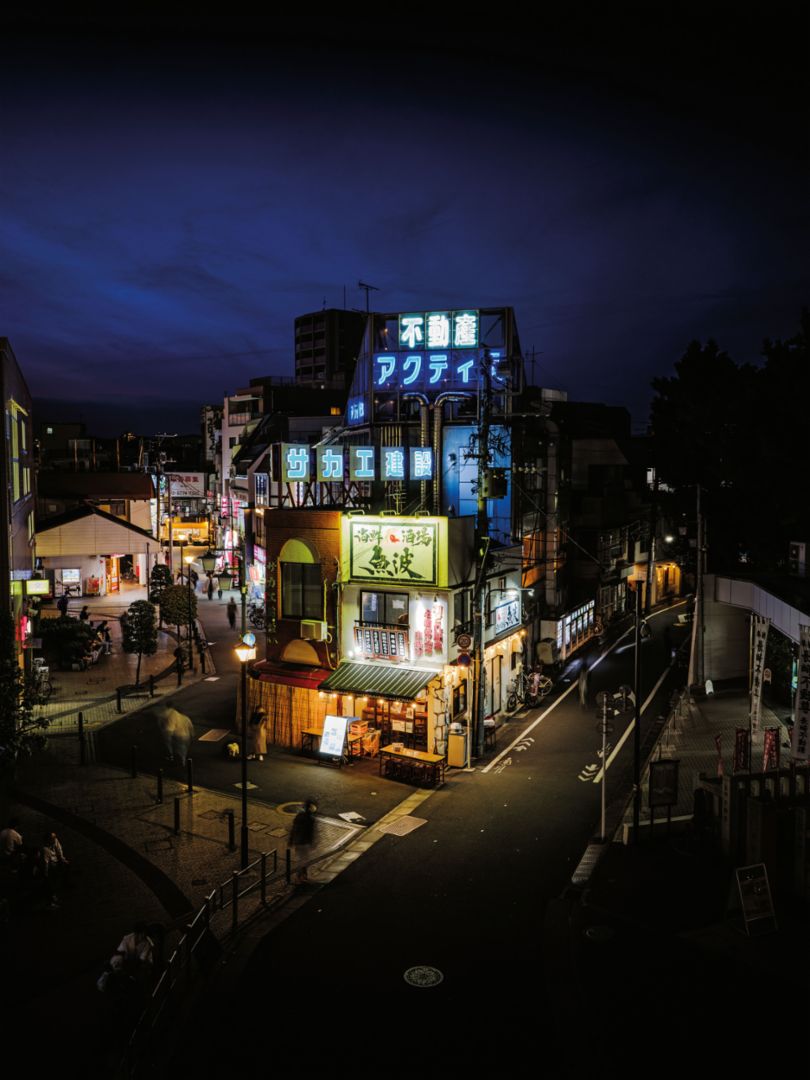
In the spotlight:
The building at Shiinamachi Station is one of the most photographed Tokyo icons.As we drift past neon signs and storefronts, he points out the subtle details: the pattern on a traditional facade, the geometry of a flower display, the quiet hum of conversation leaking from a hidden izakaya, which just might be the most popular type of food service: sake bar meets restaurant with a cozy atmosphere and traditional ambience. It’s as though Taca is seeing the city anew – through the lens of the Macan. The car doesn’t interrupt the city’s rhythm; it harmonizes with it.
“When it comes to electric cars, it’s not just about the environment,” he says, breaking the silence. “It’s about appreciating subtlety. Refinement.”
To him, the electric Macan represents more than progress – it represents alignment. A car for those who understand quiet power. Understated elegance. A seamless connection to the world around them. And the perfect complement to his passion, as it has always been. He parks the car in front of the bar and gazes out at the city, thoughtful. “This,” he says, “this is the future of Tokyo driving.”
Consumption data
Macan Turbo Electric
Taycan Turbo S
-
19.9 – 17.8 kWh/100 km
-
0 g/km
-
A Class



